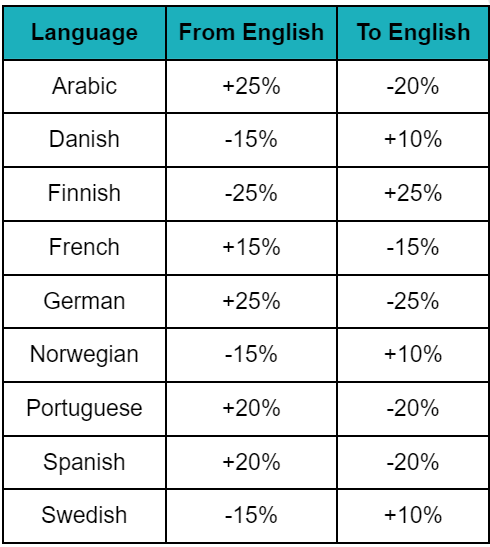Text expansion and contraction in translation
One aspect of translation often overlooked is how languages can expand or contract. Languages have a tendency to expand or contract during translation, which can have a negative impact on the final product.
Translating a text like a press release on a Word document is not a big deal for text expansion and contraction; however, when you translate a website, app, or marketing brochure, you must plan ahead to avoid problems affecting the readability or formatting. To address this, strategies like employing dynamic text boxes, setting character limits, or leaving ample white space become crucial to preparing your content for translation.
In this blog post, we will explore what text expansion and contraction are, shed light on the varying rates of different languages and share some tips to prepare your printed and online materials for translation.

What is text expansion?
Text expansion refers to the phenomenon where the translated text becomes longer or occupies more space than the original source text. This occurs due to linguistic structure, vocabulary, and grammar differences between the source and target languages.
For example, languages with different rules for sentence structure may need additional words or phrases in translation. Similarly, a text containing idiomatic expressions may require more words to convey the same meaning in the target language. Obviously, more words take more space, as you can see in the following example:
Text expansion example
Available 24/7
Source language: English
Disponible 24 horas del dia, 7 días a la semana
Target language: Spanish
What is text contraction?
Text contraction, on the other hand, refers to the opposite phenomenon—when the translated text is shorter or takes less space than the source text. Contraction can occur when the target language has a more efficient grammatical structure or when multiple words in the source language can be expressed with a single word or phrase in the target language.
Text contraction example
Disponible 24 horas del dia, 7 días a la semana
Source language: Spanish
Available 24/7
Target language: English
Expansion and contraction rates of languages
The rate of expansion and contraction varies widely from one language to another. There is no formula to follow, but here is the percentage of expansion/contraction you should expect when translating from and into English.

5 tips to prepare your content with translation in mind
Preparing your content with translation in mind can minimize the challenges of text expansion and contraction. Here are some valuable tips to consider:
Leave white space
Don’t forget to give some breathing room to your text! Leave plenty of white space so it doesn’t feel all cramped and crowded when it expands. This is particularly important when translating printed materials like brochures where artwork and pictures must fit the text.
Avoid using too many abbreviations
In various languages, using abbreviations is a common practice that aims to enhance efficiency and convenience. However, it is important to recognize that not all abbreviations have direct equivalents in every target language. Consequently, it is prudent to exercise moderation in using abbreviations to avoid text expansion when translating.
Use dynamic text boxes
Dynamic text boxes automatically expand or contract when the translated text becomes lengthier or shorter than the source text, so you do not need to worry about leaving room for space. If you opt for fixed-size text boxes, allocating an additional 25-30% of space is advisable to accommodate potential expansion.
Keep websites and apps’ strings short
When localising your website or app, it is advisable to encourage translators to keep strings short or restrict the maximum character count per string if you anticipate challenges with text expansion.
Furthermore, you can ask your linguists to review your site and/or app to ensure the translated content fits within the allocated space and functions well.
Rephrase sentences in your subtitles
The text on the screen of subtitles also tends to expand. During the process of translating subtitles, rephrase sentences to ensure your target audience gets the most important information and eliminate irrelevant information that does not fit time and space.
Are you searching for a reliable translation partner to help you with your communications? Drop us a line and connect with our team of translation experts.
